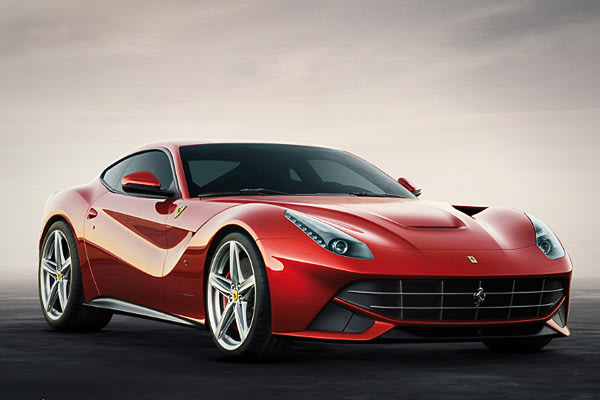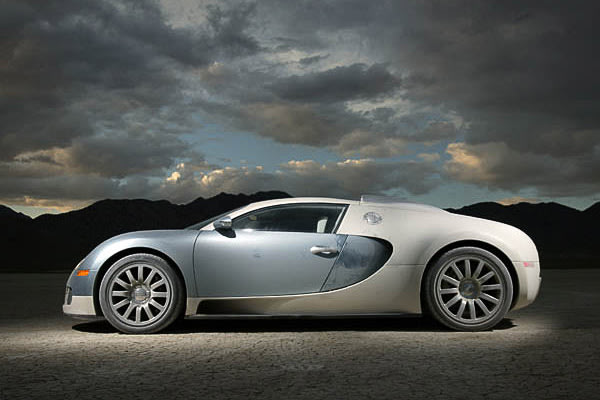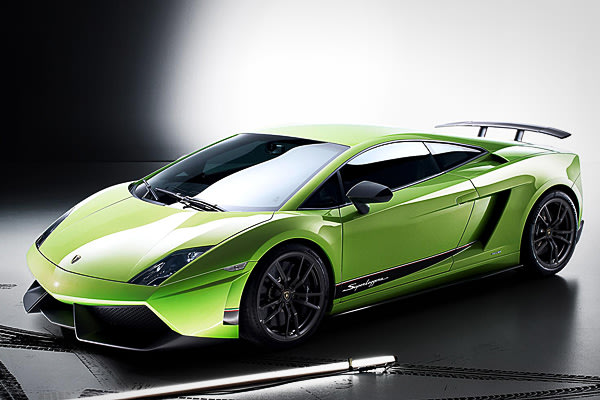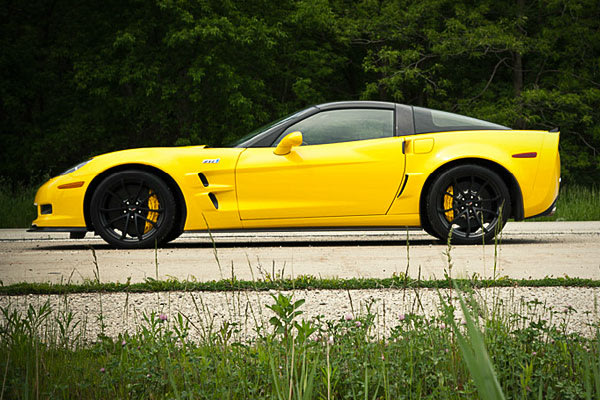 |
| Ferrari #001 |
Price: $12.2 million
Sold by: RM Auctions
Year of Sale: 2009
There
are only 21 other cars like it on Planet Earth the 1957 Ferrari 250 Testa Rossa, but none
of them was quite so expensive in the year it was sold in. While the
1957 Testa Rossas won 10 of the 19 international races that they
participated from 1958 and 1961, this particular vehicle never finished
better than fourth. However, the car’s finest quality is not its speed
but its sheer beauty that gets highlighted from its body made by Sergio
Scaglietti, the famed Italian automobile designer. The car boasts
pontoon fenders, which is said to have been one of Scagliettis
favorites.
The 1957 Ferrari 250 Testa Rossa, one of just 22 similar models
built at Maranello, boasts an
important race history in North and South
America. It debuted in the Buenos Aires 1000km in 1958 and came 4th
overall before being sold to a US client who raced it extensively in the
SCCA championship.
Listed here are the details on one of the world's most exquisite pieces of machinery the Ferrari 250 Testa Rossa:
300 bhp at 7,200 rpm, 2,953 cc single overhead cam degrees Type 128
LM V-12 engine, six Weber 38 DCN carburettors, four-speed manual
gearbox, unequal A-arms, coil springs, Houdaille hydraulic shock
absorbers and anti roll bar front suspension, live axle, semi elliptic
leaf springs, Houdaille shock absorbers with four trailing arms rear
suspension, four-wheel drum brakes. Wheelbase: 2,350 mm (92.5 in.)
“The result of a race is 50 percent due to the car. When the car has
been made, you are only half way there. You now have to find a driver
and it costs more to train a good racing driver than it does to make a
car. When I decide to take part in a race, I don’t think about my
competitors. I try to do my best, without telling myself ‘I must beat
Mercedes or Maserati’. For me the importance of a race is the technical
result, that is, whether – given the same course and the same
atmospheric conditions – established records have been broken. If so,
progress has been made.” Enzo Ferrari’s telling insight on his views of
motor racing.

In 1957 the Commissione Sportiva Internationale (CSI) had been
contemplating new rules to make sports car racing safer after the
disaster at Le Mans in 1955 and Alfonso de Portago’s crash in the 1957
Mille Miglia, in which he and his co-driver, along with nine spectators
were killed. Despite this appalling accident, Ferrari went on to take
The Sports Car Championship at the final round at Caracas. The team had
begun the year with the 3.8-litre 315 S, which was later developed into
the 4.0-litre 335 S. Ferrari’s mind was already on his next creation –
which would be one of his finest

Anticipating a reduction in capacity for sports cars by the CSI for
the 1958 season, Ferrari began working on a car powered by the 2,953 cc,
250 GT, V-12 engine. Ferrari first used the name Testarossa on the
four-cylinder 500 TR. The name “red head” was used because the car’s cam
covers were painted red. The new V-12 car, developed under Carlo
Chiti’s engineering team, was intended by Enzo Ferrari as a more
powerful version of the four-cylinder car retaining similar handling
characteristics and tremendous reliability. This robustness had been
proven on the 250 GT unit with a single overhead camshaft. Chiti revised
the cylinder head design, fitted high compression pistons, special
conrods and six Weber twin choke carburetors.
The first prototype, chassis number 0666, fitted with an envelope
body similar to the 290 MM, appeared at the Nürburgring in 1957 and was
tried by all the Ferrari works drivers. Olivier Gendebien set the sixth
fastest time, no small feat against the more powerful Aston Martins and
sister Ferrari team cars. The car finished a disappointing tenth, driven
by Masten Gregory and Olindo Morolli who was given the drive at the
last minute and was somewhat out of his depth.
The second Testarossa prototype, chassis number 0704, was bodied by
Scaglietti and caused a sensation when it appeared at Le Mans. With its
distinctive pontoon fenders, the car was said to be one of Scaglietti’s
very favourite designs. Ferrari’s coach building artisan explained,
“Formula 1 was the inspiration for the shape, there were pods on the
sides of the F1 cars, (Ferrari Lancia D50) and while I wouldn’t call
them aerodynamic, they went well. We used a similar idea by designing
the body to bring air in towards the brakes to cool them. In many ways
the Ferrari 250 Testarossa was a Formula 1 car with fenders.”
At Le Mans in June 1957 both prototypes suffered problems with new
pistons. 0666 failed to start and 0704 retired, having run as high as
second place. In Venezuela, during the final round of the championship,
its potential was finally proven. Wolfgang von Trips and Wolfgang Seidel
finished third in 0666 with Maurice Trintignant and Gendebien in fourth
with 0704.
1958 would prove to be the 250 Testarossa’s absolute pinnacle. The
factory cars won four of the six races to secure Ferrari’s third
consecutive World Sports Car Championship for Constructors. Phil Hill
and Peter Collins won in Argentina and again at the Sebring 12-Hours.
Victory at the Targa Florio was taken by Luigi Musso and Gendebien and
the 24 Hours of Le Mans was won by Gendebien and Hill.
For 1959 the Testarossa’s bodywork was redesigned by Pinin Farina and
built by Fantuzzi, Scaglietti having been sidelined by the increased
output of Ferrari road cars. While the TR59 of Dan Gurney, Chuck Daigh,
Hill and Gendebien took victory at Sebring in March there were to be no
further wins and Ferrari finished second to Aston Martin in the
Championship.
In 1960 Testarossas won at Argentina (Hill/Gendebien) and Le Mans
(Gendebien/Paul Frere) and took the Championship once again. Although
the 330 TRI/LM would win at Le Mans in 1962 with Hill and Gendebien,
1961 was really the car’s swansong as a works entered car. Hill and
Gendebien won at Sebring and Le Mans and Lorenzo Bandini and Giorgio
Scarlatti won at Pescaro in the TR61 prototype.
Only 34 250 Testarossas were ever built, although this figure is
debatable, as it also includes both prototypes as well as the 330
TRI/LM. Some were manufactured purely as customer cars. Many of these
would continue racing for years to come, often with great success in
national and international competition.
The car presented here, 0714, is the fourth Ferrari 250 Testarossa
built and the second customer car. Finished in white, it was sold new to
Piero Drogo who was then living in Modena. Although born in Vignale
Monferrato, a small town near Alessandria in Piedmont, the Drogo family
emigrated to Venezuela. Drogo raced extensively on the South American
continent in sports cars and saloons. He finished seventh in the 1956
Venezuelan Grand Prix and later returned to Italy where he worked as a
mechanic for Stanguellini in Modena. In 1960 he drove a Cooper Climax in
the Italian Grand Prix at Monza, finishing eighth. In the early sixties
he started Carrozzeria Sports Cars. They produced bodies for the
stunning P3 and P4 Ferraris and the square-backed car which became
affectionately known as the “Breadvan”.
Ferrari 250 Testarossa chassis number 0714 was immediately modified
by Drogo after he bought it. He added air scoops underneath the doors to
help cool the rear brakes. His first race in the car was the 1958 1000
Kilometres at Buenos Aires, Argentina. The car was shipped to South
America along with a factory car, ready for competition. Drogo had a
trouble-free race in 0714 finishing a highly credible fourth overall
with co-driver Sergio Gonzalez. Drogo’s next race in this TR was at the
infamous 1958 Cuban Grand Prix in Havana. Juan Manuel Fangio had been
kidnapped by Fidel Castro’s revolutionaries and the race was marred by a
terrible accident. The event was abandoned amidst chaos and Drogo was
classified 13th.
0714 was shipped back to Europe and competed in some minor events
before being rebuilt and eventually repainted red. Drogo raced the car
for the last time at the XII Circuito Internacional Vila Real in
Portugal. 0714 was then sold via Luigi Chinetti to Alan Connell of Fort
Worth, Texas in November 1958. Piero Drogo was later killed driving his
365 GTC Coupé in 1973. He ran into the back of a truck that had broken
down in an unlit tunnel near Bologna. He was 46 years old.
In 1959, prior to campaigning 0714, Connell had the car painted black
with a very distinctive red nose, in the same style as his Maserati
250S. Connell raced 0714 extensively across the United States in SCCA
National events. At the Pensacola National he was third overall and
second in class. Fourth overall and second in class at Virginia
International Raceway. Tenth and second in class at Cumberland and at
Bridgehampton was seventh and took his first class victory. Another
class victory was achieved at the next race at Elkhart Lake, with fifth
overall. Buckley, Colorado saw a fourth and second in class, a result
repeated at Riverside. At the Riverside Kiwanis GP he was eighth and
fourth in class and he finished fourth overall and first in class at
Montgomery. Connell easily won the Class D Modified title in 1959 and he
often raced the Testarossa at Regional events. He was a very capable
driver and took an outright victory at Mansfield, Louisiana.

Eventually this fabulous Testarossa was returned to Chinetti’s in New
York. The car was rebuilt and sold to Washington, D.C. resident Charlie
Hayes. Hayes dropped a valve at the Thompson National in 1960 but
finished second in a Regional at Vineland, New Jersey and fifth at
Marlboro, Maryland. Hayes had the car repainted white at the end of the
season and sold it to Carl Haas in Chicago. It was then purchased by
Wayne Burnett who repainted the car red.
Burnett was a journeyman driver and while he competed in nine
National events during the 1961/62 seasons his best finish was sixth at
the Meadowdale National in 1962. He fared better in the Regionals
finishing second at Wilmot Hills, second at Minneapolis, an outright win
at Lawrenceville, Illinois, and a third back at Wilmot Hills.
In 1962, the original engine 0714 was removed and the dry sump unit
from 0770 TR was installed. Disc brakes were added as well as a clear
TR59 type carburettor cover. Burnett raced the car six times in 1963,
finishing eighth at Elkhart Lake and with Luke Stear co-driving, 12th in
the 500-mile race at the same circuit.
The car was eventually acquired by Robert Dusek of Solebury,
Pennsylvania in 1970 and was restored back to its original specification
and colour, reunited with engine 0714. In 1977 the Testarossa was shown
by Dusek at the 14th Annual Ferrari Club of America National meeting at
Watkins Glen.
In August 1984 Ferrari 250 Testarossa 0714 was sold to Yoshijuko
Hayashi in Japan and in January 1995 was acquired by Yoshiho Matsuda
from Tokyo. The same year Matsuda showed the car at Suzuka at the Forza
Ferrari meeting. Partnered by Oyaizu, this car competed in the Mille
Miglia in 1995 and 1996. Matsuda also drove it at the Monterey historic
races at Laguna Seca in 1996.
In 1998 the car was back in action at the Neko Historic Automobile
Event at Honda’s Twin Ring Motegi Circuit. It competed again the
following year. Also in 1999, 0714 was at the tenth anniversary meeting
of the Ferrari Club of Japan at Suzuka.
In 2004 the car was shown at The Quail in Carmel Valley and displayed
at the Ferrari Club of America Laguna Seca track event. More recently
0714 has benefitted from a re-spray back to black and red – the same
livery in which the car competed in so many races in the 1950s and
1960s. Furthermore, the car has been overhauled by marque specialists
ensuring that it is ready to be enjoyed on rallies or track events in
America and Europe.
RM Auctions has had the pleasure of test driving 0714 and confirms
that the car performed beautifully. The steering is light and the
throttle response is immediate, giving the driver the feeling that the
12-cylinder engine is more than willing to power through the revs to the
8000 rpm redline. The symphony of the powerplant matched with the growl
from the megaphone exhausts will make any enthusiast’s hair stand on
end. The reverse lock-out, four-speed all-synchromesh gearbox is very
precise and confidence inspiring. Easier to drive than a Ferrari 250 GTO
and perhaps much more rewarding thanks to its more favourable power to
weight ratio, 0714 is a truly fantastic racing car. Not only is the
performance breathtaking, but the view over the bonnet when driving is
simply one of the best in the world.
It is the fourth of about 34 cars produced and the second
customer car built. Moreover, it is one of only 21 cars to feature the
desirable pontoon fenders and as such is considerably rarer than the
famed 250 GTO, of which 36 examples were built. With its Scaglietti
bodywork, 0714 is truly stunning – like a great sculpture it begs to be
touched. It’s incredible racing history puts the car far beyond most
other 250 Testarossas, if such a thing can be said. This car would be
welcomed with open arms to all the great historic race meetings and
events around the globe. As these cars rarely come to market, the
Testarossa is one of the most coveted in the marque’s history. With
breathtaking looks, fantastic performance and handling, this is a true
connoisseur’s Ferrari.



























